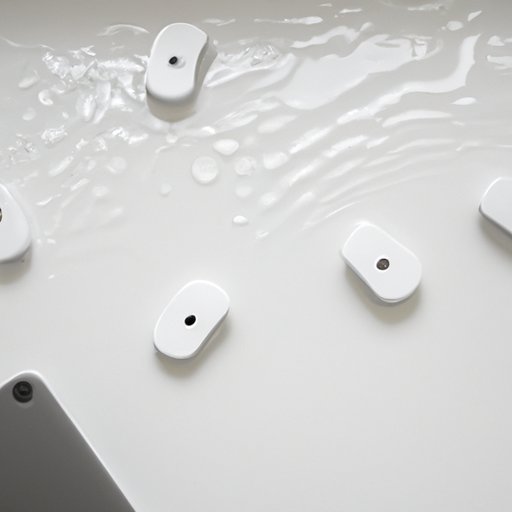
How to Get Water Out of AirPods: A Step-by-Step Guide
As any AirPods user knows, it can be a nightmare when water gets inside your earbuds. Water damage can cause significant harm to the AirPods, leading to decreased sound quality, reduced battery life, and even completely broken earbuds.
But don’t despair just yet. In this article, we’ll provide you with a step-by-step guide on how to remove water from your AirPods and prevent further damage in the future. But first, let’s discuss some general tips for maintaining your AirPods.
Causes and Prevention of Water Damage in AirPods
Before we get into the specific steps, let’s talk about how water can enter AirPods and ways you can prevent it from happening in the first place.
Some of the most common causes of water damage to AirPods include sweat, rain, and humid environments. Therefore, some simple preventative measures include avoiding wearing AirPods during workouts or other sweaty activities, like running in the rain, or leaving them in a humid environment, like a bathroom.
To avoid water damage, it’s also essential to store your AirPods in a dry place. For example, if you’re planning to go swimming or engage in other water sports, store your AirPods in your locker or at home rather than bringing them with you.
Steps for Removing Water from AirPods
Unfortunately, accidents happen, and if your AirPods have been subjected to water damage, there are steps you can take to dry them out. Here’s a step-by-step guide:
Step 1: Remove the Earbuds from the Case
If water has entered your AirPods, the first thing you should do is remove the earbuds from the case. If water is left in the case, it can cause further damage to the AirPods and prevent them from drying properly.
Step 2: Use a Towel to Wipe Away Visible Water
Gently wipe the earbuds with a towel to remove any visible water from the surface. Be careful not to push water further into the AirPods, as this can make the damage worse.
Step 3: Use a Hair Dryer on the Lowest Heat Setting
Using a hairdryer on the lowest heat setting can help remove any remaining moisture from your AirPods. Hold the hairdryer at least six inches from the earbuds and move it around continuously to avoid overheating any one area.
It’s essential to be patient during this step as rushing can cause more damage. Depending on how wet the AirPods are, it can take anywhere from 20 minutes to an hour to dry them thoroughly.
Step 4: Place the AirPods in a Bag of Silica Gel Packets
If you have silica gel packets, place your AirPods in an airtight bag with them. These packets absorb moisture, speed up the drying process, and help prevent any further damage. If you don’t have silica gel packets, you can substitute them with uncooked rice as an alternative.
Step 5: Wait at Least 48 Hours Before Using AirPods Again
After you’ve completed the previous steps, it’s crucial to give your AirPods time to dry completely before attempting to use them again. Wait at least 48 hours before checking if they are entirely dry and working correctly.
What to Do If DIY Methods Don’t Work
If the DIY methods don’t work, it may be time to contact Apple Support. They can examine your AirPods and suggest repair options. However, be aware that water damage isn’t typically covered under Apple’s warranty, so there may be a cost involved.
Tips for Avoiding Water Damage in the Future
Now that you’ve learned how to dry out waterlogged AirPods let’s talk about ways you can prevent water damage from happening in the future. One of the simplest ways is by using protective cases specifically designed for AirPods, which provide an added barrier against water and other elements.
In addition, be conscious of what environments you’re in when wearing AirPods, avoiding wet and humid places. Lastly, make sure to clean your AirPods regularly to avoid any dirt or grime buildup, which can also affect their performance.
Conclusion
Now you know how to get water out of AirPods using some simple steps, but it’s essential to take preventative measures to avoid water damage in the first place. If you need help or have additional questions, reach out to Apple Support or a professional repair technician. But always remember, be careful when attempting to fix problems yourself, and you can prolong your AirPods’ lifespan with proper maintenance and care.




